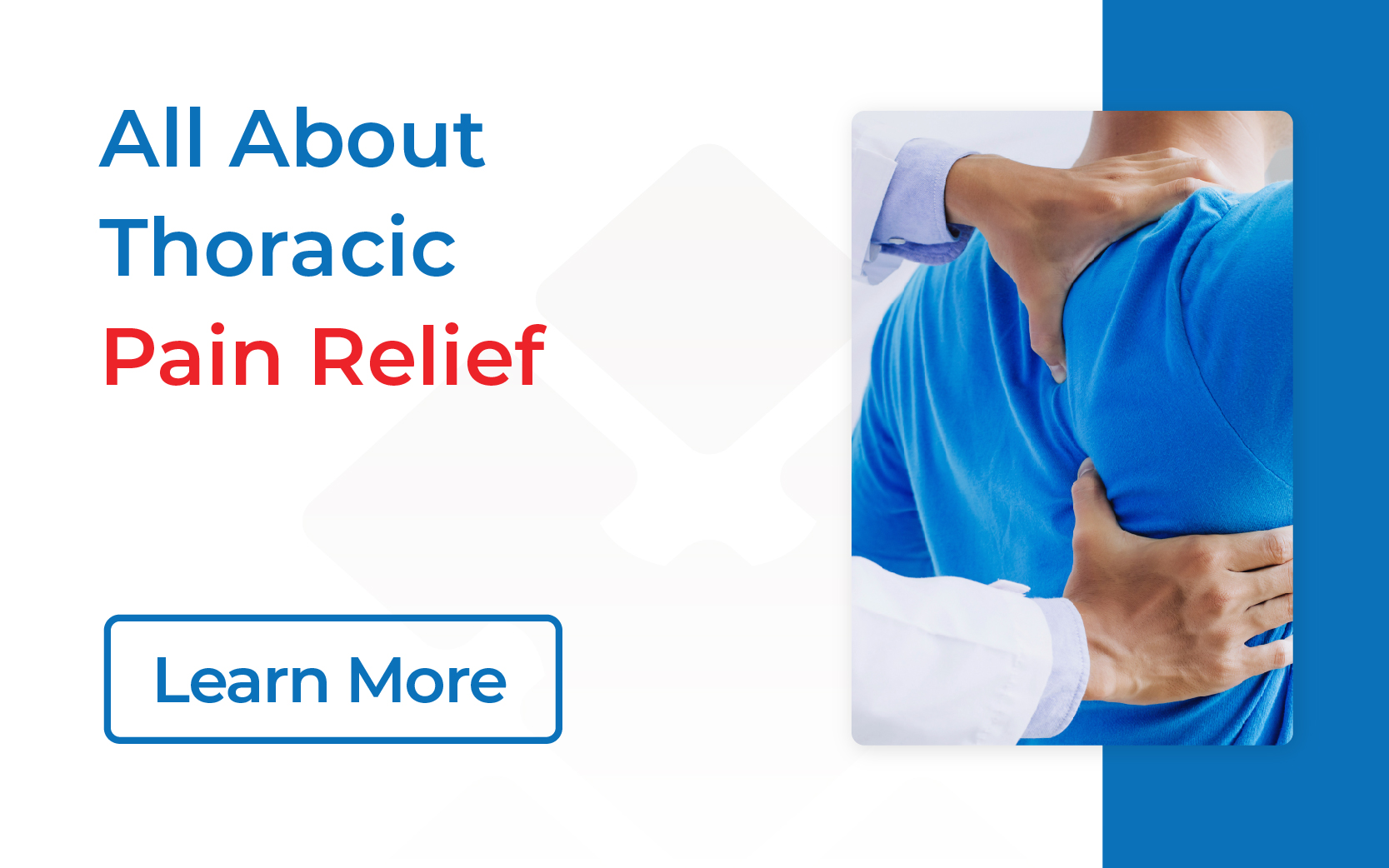Anyone suffering from chronic pain in the thoracic region of the back (the middle area between the base of the neck and the lower back) knows how much it can limit their ability to enjoy life. Even basic activities like walking, cooking, and gardening can be difficult or even impossible for people with thoracic pain.
Understanding the details about thoracic pain relief and its options for treatment is essential to recovery and getting back to doing the things you love most.
What Is Thoracic Pain?
The thoracic spine is a complex part of the body composed of vertebrae, intervertebral discs, facet joints, and muscles. Thoracic pain can be caused by poor posture, overuse, trauma, or underlying medical conditions like osteoporosis or herniated discs. The pain can be acute or chronic, and it can greatly interfere with one’s quality of life, limiting their ability to participate in everyday activities.
Thoracic Pain Symptoms
Symptoms of thoracic pain vary depending on its cause. They can be as subtle as mild discomfort or stiffness in the upper back region or severe enough to cause sharp, stabbing pain.
Other possible symptoms include pain that worsens with movement, difficulty in breathing, tightness or muscle spasms in the upper back, and radiating pain to the chest or abdomen.
Diagnosing Thoracic Pain
Diagnosing thoracic pain begins with a thorough physical examination and medical history review by your healthcare provider. Diagnostic tests like X-rays, MRI scans, or CT scans may be used to get a thorough view of the spine. Your medical practitioner should also ask you questions about your pain severity, length of duration, and other details about your pain and how it started.
With an accurate diagnosis in hand, your doctor will be equipped to create an individual treatment plan.
Common Treatments for Thoracic Pain
Treatment for thoracic pain varies based on the cause and severity of symptoms. The most common therapies include:
- Minimally invasive procedures such as nerve blocks, trigger point injections, and radiofrequency ablations
- Over-the-counter or prescribed medications like nonsteroidal anti-inflammatory drugs (NSAIDs), muscle relaxants, or pain relievers
- Physical therapy to reduce pain and improve mobility by strengthening the back muscles and improving posture
- Alternative therapies like massage, hot needling, and chiropractic care
- Psychological care to help patients cope mentally and emotionally with their chronic pain
- Surgery may be needed for severe cases
Living With Thoracic Pain: Tips and Strategies
Finding thoracic pain relief often requires some lifestyle changes. Regular exercise can help strengthen your back muscles and improve flexibility. Adopting a healthy diet rich in calcium and Vitamin D supports better bone health. Paying attention to posture while sitting, standing, or lifting heavy objects can also prevent further strain on your back.
Relaxation techniques like deep breathing or meditation can also help manage the stress associated with chronic pain. Regular check-ups and open communication with a pain management specialist are vital in taking control of your condition and getting relief as quickly as possible.
Find Thoracic Pain Relief at HPM
At HPM, we specialize in diagnosing and treating a wide range of conditions that cause chronic pain, including thoracic pain. Our pain management specialists are medically trained to tailor each patient’s treatment plan to their unique needs. You can find our clinics in rural communities across the country, making it easier for you to access the care you need.
Living with thoracic pain can be challenging, but it’s not something you have to do alone. With the right treatment and support, you can manage your pain effectively and get your life back.
Contact us today.


